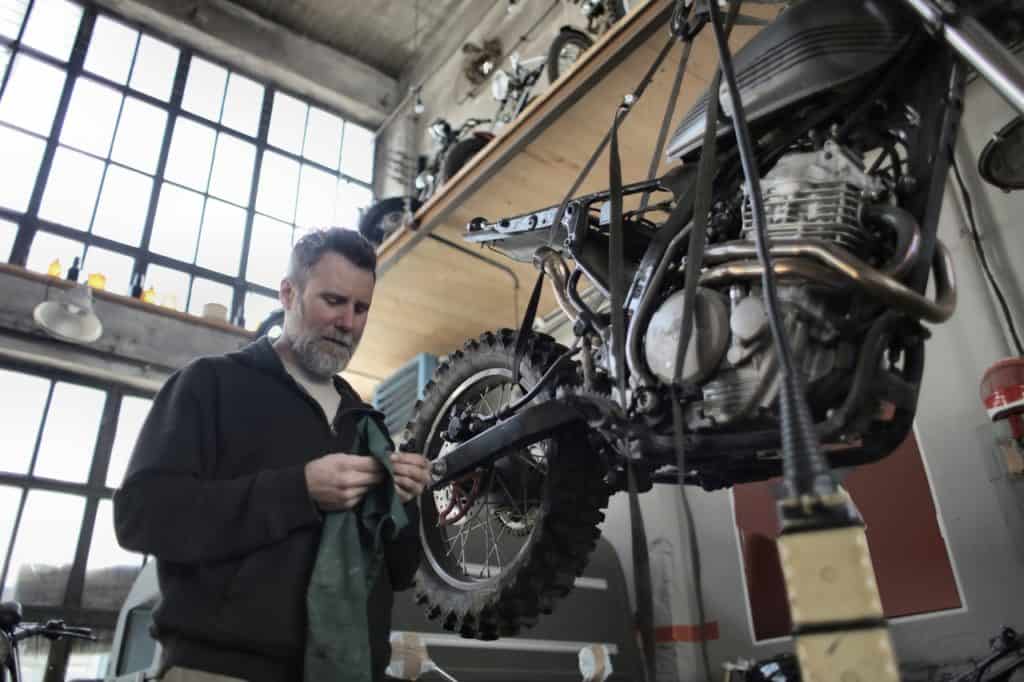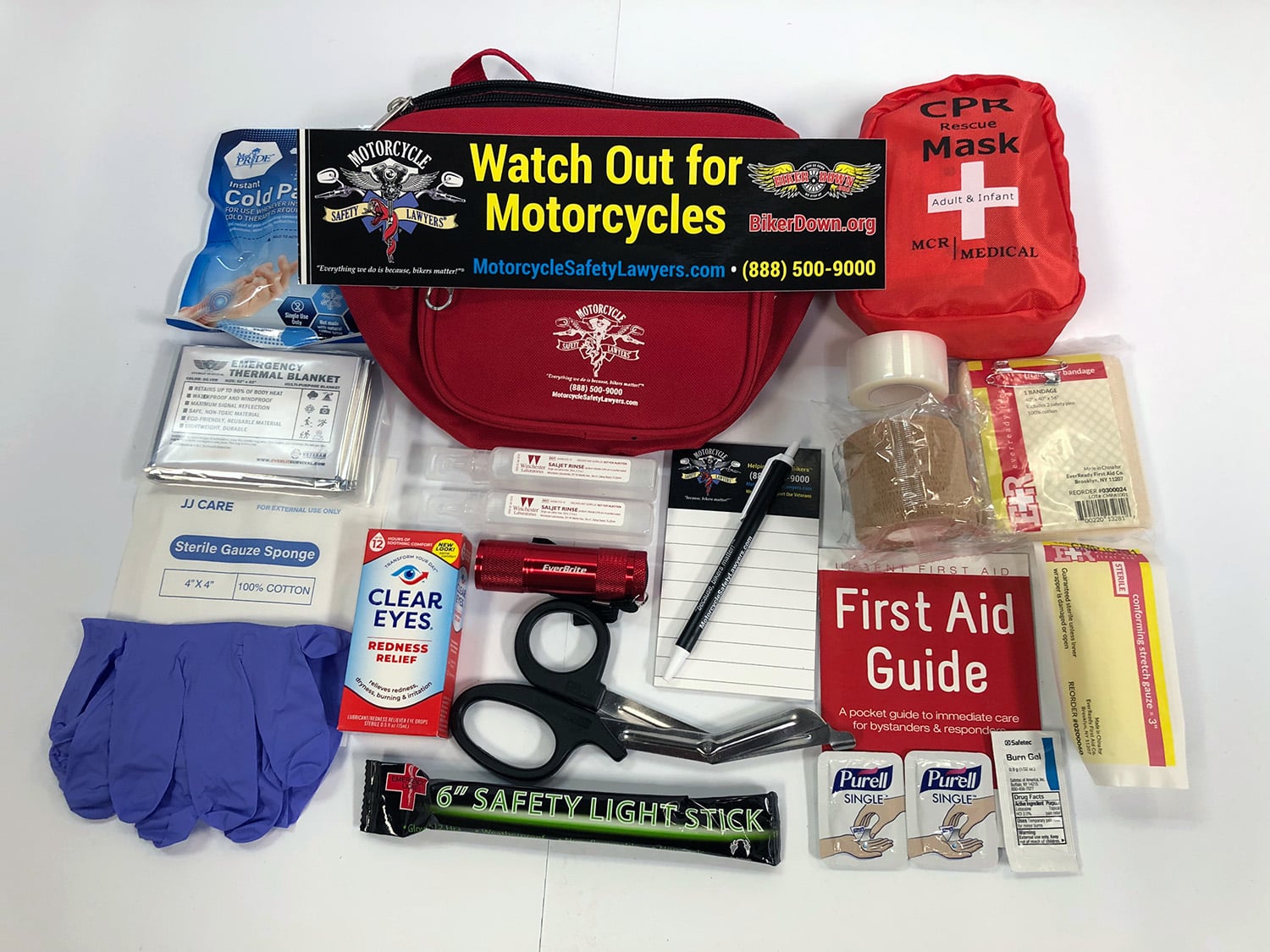How to change a motorcycle tire and so much more! | Motorcycle Tire Maintenance!
Last updated Thursday, October 6th, 2022


Learning how to change a motorcycle tire and proper motorcycle tire maintenance is key to both a safe and enjoyable experience on the all-American motorcycle rides enjoyed by so many across the country! We looked up what the most asked questions on the internet were in regard to motorcycle tires and decided to give you all the answers here.
After all, what fun is a motorcycle without a tire?
How to change a motorcycle tire:
The first thing you do before when you learn about how to change a motorcycle tire, (otherwise referred to as how to mount a motorcycle tire) is to go to the kitchen and mix up a 50/50 solution of warm water and dish soap. You are going to use this as your lubricant throughout the tire change process so get that ready and have it handy. Once you get started you are going to spray it on the tire and rim before each tire change step.
Now you have your solution ready the next step is to get your motorcycle jacked up or onto stands so you can work on it. Once you are sure it’s stable and both wheels are off of the ground and the bike resting in a stable way, you can go ahead and remove your rear wheel to get started with your motorcycle tire change.
Next, you are going to deflate and break the bead on the motorcycle tire. You can do this with a motorcycle tire bead breaker, tire irons, or by pushing down on the sidewall of the tire with your heel. Then use your tire irons to lever one side of the tire up and over the rim. When you have that done, flip the rim and lever the other side of the tire over the rim as well. The tire should pull free from the rim when you are done.
If your tire isn’t breaking free, stand the wheel vertically and put your knee on the tire, right behind where you inserted the tire iron, and give it a good push. This extra force should help to push the sidewall over the lip of the rim so you can remove the old tire.
Now to get the new tire onto the bike you will want to spray your soap and water solution liberally to help make this process easier, checking the rotation marker on the tire and the rotation orientation on the rim as you go to make sure they line up. Push the first sidewall over the lip of the rim and grab your tire irons to assist you in levering the second sidewall over the rim. Remember to line the balance dot up with the valve stem on the rim, this will help when you later balance your wheel.
To set the new tires bead inflate your tire. Remember that when the bead sets, it is loud and can pinch any stray objects near it so keep tools, fingers, and toes away from your rim. When that’s done simply check for leaks on your bead by spraying your water/detergent mixture along the edge of the rim and tire while watching for bubbles. If you don’t see any, inflate or deflate your tire to the correct PSI and install your wheel back on your bike.
Now you know how to change a motorcycle tire there are a few other things you will need to know below.
How to read motorcycle tire size:
According to https://www.chapmoto.com/, the reality is that most people don’t know what size tires their bikes are running. How do you find your bike’s tire size? There are three common size formats for street tires: Metric Sizing (Most Common), Alpha Numeric (Mostly Cruiser), and Inch Sizing (Mostly Dirt Bike)
You will have to get on the ground and look to see or verify your tire size. If your bike is running aftermarket wheels, the actual tire size might be different than what is listed in your owner’s manual or on the spec sticker on your motorcycle.
Metric Tire Sizes: (Most Common Motorcycle Tire Format)
180/70R-16: This is the number that you are looking for.
The first number (180) is the width of the tire in millimeters.
The second number (70) is the aspect ratio, which is the height of the sidewall. The height is 70% of the width or 126mm high.
The third number (16) is the rim size. In this case, the rim size is 16 Inches in diameter.
The letter between the second and third numbers, either R or B will tell you if the tire is Bias Ply or Radial. If there is no letter, the tire is Bias Ply.
Alpha Numeric Motorcycle Tire Sizes:
MU85B16: This is the Alpha/Numeric sequence you are looking for.
The first set of letters is the width. MU = 140 millimeters. Reference a Street Tire Size Conversion Chart for all of the Letter Designation Breakdowns.
The next letter will be B or R for Bias Ply or Radial
The Last number will be the rim size or rim diameter.
Numeric : (Mostly Dirt Bike, Vintage, or Sidecar)
5.00-16: This is the number you are looking for.
The first number (5.00) is the tire width in inches. 5.10 = 127 millimeters
The second number is the rim size or rim diameter which in this case is 16 Inches.
Numeric tire sizes typically run from 2.75 or 80mm or MH all the way to 6.0 or 150mm or MV.
How to balance a motorcycle tire:
If you are doing this yourself there are 4 basic steps below that cover the process:
- Mount your motorcycle wheel on the wheel balancer. Make sure your static balancer is sitting nice and level.
- Check the wheel balance and mark the lighter side.
- Add counterweights to the lighter side of the wheel.
- Recheck the wheel balance after adding the counterweights.
With that said – like all things, there is the basic how you do it, and then there is what is the “Best” way to do it. A detailed map of the process is available on Wiki How and we think it’s pretty great!
Can you plug a motorcycle tire?
The processes for tubed and non-tubed tires are different, but both tires can be made rideable again (at least enough to get you home). Patching a tubed tire requires you to remove the wheel, pop the bead (not easy!), and pull out the tube to fix it.
If you don’t have to do either we don’t recommend you do – however, if you are stuck somewhere and it’s your only option, then it is best you know how to plug your tire.
Plugging a Non-Tube Tire
Try to remove the object puncturing your tire the same way that it entered so that you do not make the puncture hole any larger or more jagged but do remove it. Once it’s removed, clean up the edges of the hole to create a good, tight seal for the plug.
Next, install the plug. There are two main types: the long strips and the mushroom style. Some kits may even come with an adhesive to help bond the plug to the rubber of the tire.
The strip style of plug comes with an insertion tool. You will need to double up the plug by placing it halfway in the tool. Insert the plug until there is about ½” sticking out of the tire. Then pull and remove the tool and snip the excess plug material to about ¼”.
The mushroom-style plug (Stop & Go) needs a special installation tool. The plug is seated by twisting it in the tool with an Allen wrench. Then stretch it with pliers and when it’s in place, trim the plug flush with the tire.
Patching a Tubed Tire
For most bikes, you will need to remove the wheel and pop the bead on the tire to get at the tube. Then you have to deflate the tube entirely. To prep the tube for its patch you need a “scrubber” to roughen the surface of the tube around the puncture hole.
Apply your adhesive to the patch and place the patch on the tube, firmly rub from the center to the edge of the patch to create a tight seal with no air bubbles. Then you can reinstall the tube and the tire and inflate it back to riding pressure.
We provide this content and more with the intention that it will keep riders from the need for our services, if you find yourself in a situation where you do need us you can call 24/7 and our team will be there for you. 1-888-500-9000



